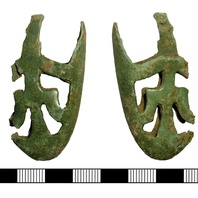
Viking Objects
Scabbard Chape (NLM-5BD697)
The incomplete openwork tongue-shaped front plate of this chape is decorated with at least six asymmetrical apertures and resembles similar chapes with ‘Birka Falcon’ decoration.
Read More
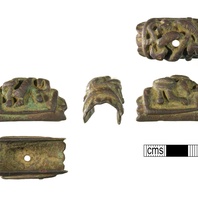
Viking Objects
Decorative Sword Mount (WMID-2FF927)
A cast copper alloy sword mount with English Urnes style decoration which could have been used on the sword pommel. Pommel mounts developed over time from simple rounded or triangular pieces of metal to more stylized multi-pronged designs. They could be decorated with various inlays or gilding. Pommel mounts are often the only indicators for attributing swords to typologies and, therefore, dating them.
Read More
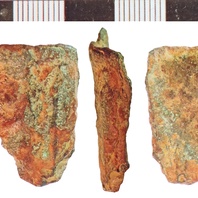
Viking Objects
Scabbard Chape (NLM-6C0242)
This possible scabbard chape fragment is very damaged but the reddish tint is often characteristic of Anglo-Scandinavian metalwork
Read More
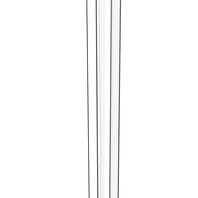
Viking Designs
Drawing of a Viking Sword
This is a drawing of a Viking Age sword which was found in Grave 511 at Repton where the invading Viking Great Army had their winter camp in 873/4. When it was found, the sword had traces of a wooden scabbard attached to the rusted blade. Analysis showed that the scabbard was lined with fleece and covered in leather. The grip was wooden and covered in a woollen textile.
Read More
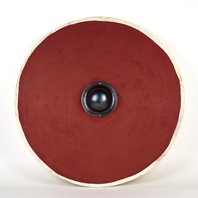
Viking Objects
Reproduction Shield
A reproduction shield based on examples from Gokstad and Trelleborg. The face is covered with linen, based on traces of linen found on the reverse of a shield boss at Cumwhitton, Cumbria. The rim was covered in wet, stretched rawhide which was allowed to shrink and dry in place. The iron, carinated boss is a type that is common on Viking Age sites in England and Scandinavia
Read More
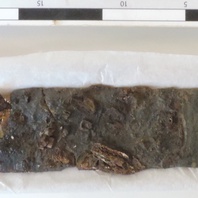
Viking Objects
Sword Blade (1987/590-2)
This fragment of a sword blade was found at the Viking cemetery at Heath Wood, Ingleby in Mound 1. It is incomplete and consists of a 385mm long section of the blade with a rounded tip. the blade has a fuller down the middle to reduce weight. The sword would probably have been over 900mm long when complete, so less than half the blade survives.
